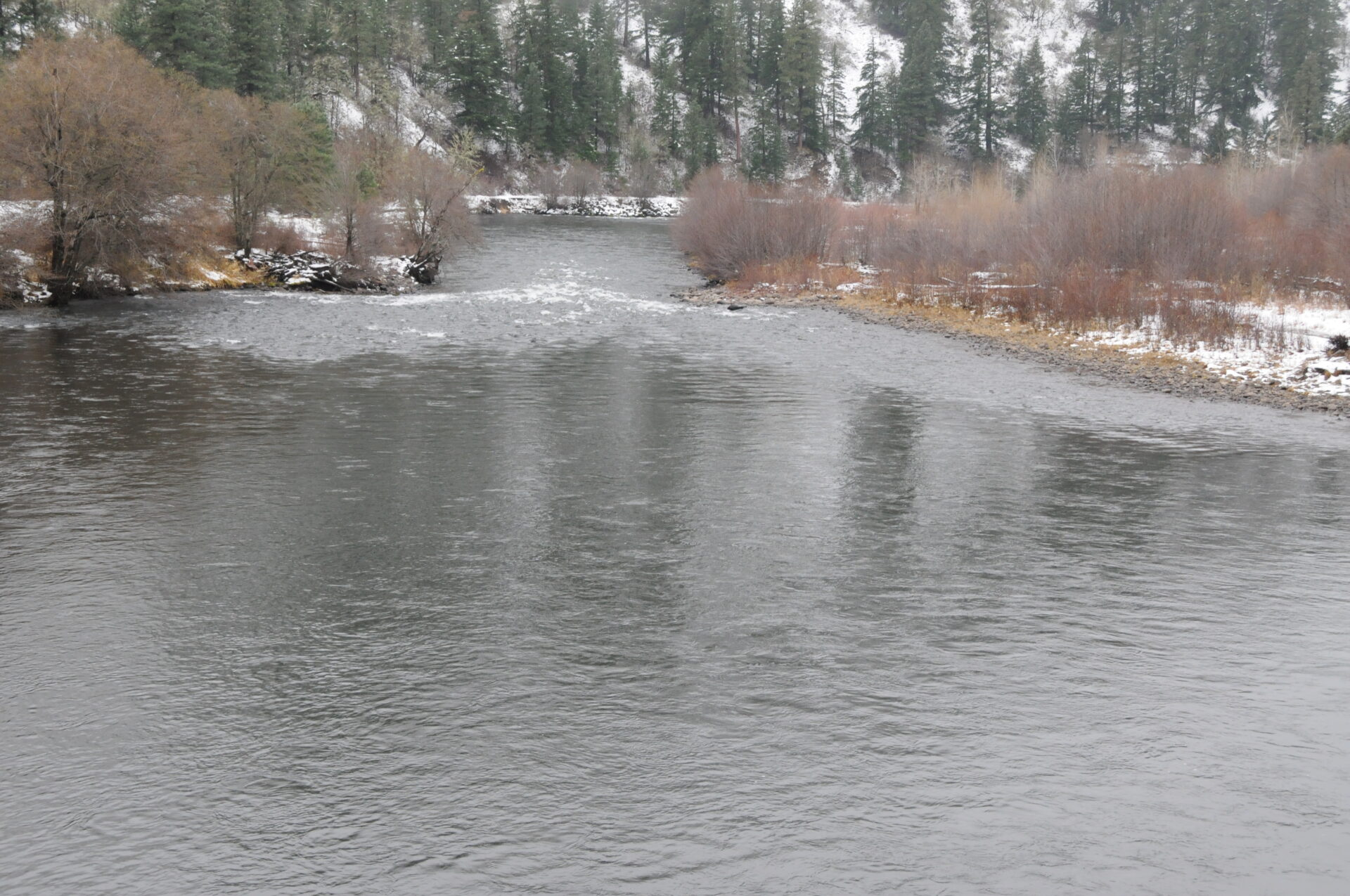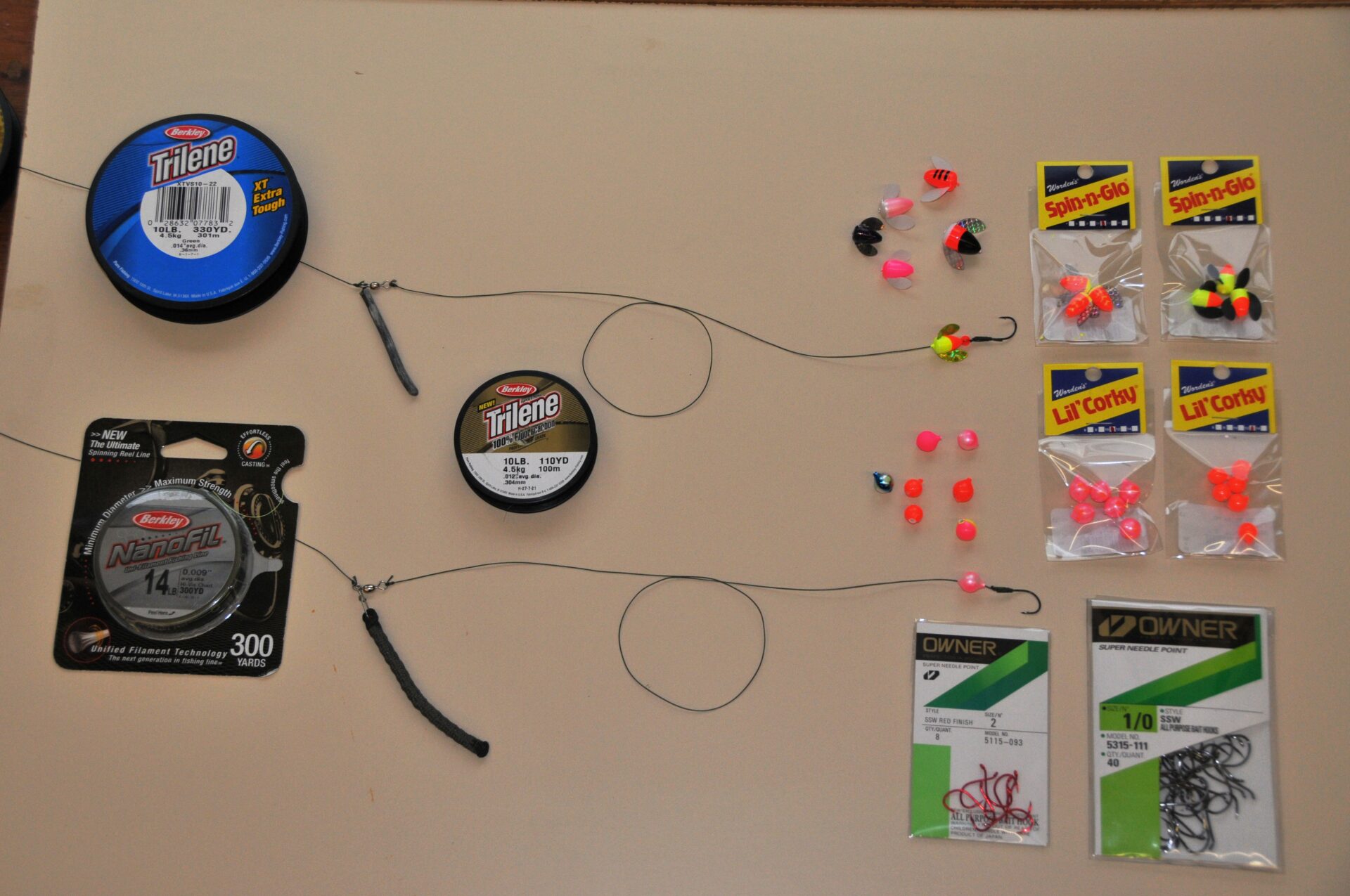Drift Fishing Winter Steelhead in Rivers
by Buzz Ramsey
Steelheads occupy a special place in fishing lore by anglers focused on the quest for silver fish. Sometimes referred to as sea-run rainbow trout, grey ghosts, chrome torpedoes, iron heads, or simply trout, these iconic fish are native to the Pacific Northwest and, due to hatchery introductions, available in the Great Lakes region too. No matter where they are found, steelhead are known (sometimes, even worshiped) for their elusiveness, size, strength, stamina, acrobatics, and unparalleled beauty. They are regarded as a premium, iconic fish on every level.

Drift fishing is a tried-and-true fishing method for catching these sometimes difficult-to-capture river fish. Over the years, by boat anglers wanting to extend the drift of their baits, drift fishing has morphed into other forms like: free or side-drifting, rolling shot, and bobber doggin. In all cases, the basic principle is the same; that is, to cast out and allow your bait or artificial offering to drift along in the current near bottom.
Just as the name “drift fishing” indicates, your presentation should drift with the current of the stream, this enables you to quickly cover a lot of water, increasing the odds of an encounter. How your presentation drifts is governed by how much weight you use as compared to the speed and depth of the water fished.
Where to Drift Fish

Ideal, “textbook” steelhead water is generally 4-to-8 feet deep and running at about the same speed as a persons’ walk. Of course, this isn’t the only place you’ll find steelhead. Riffle, tail-out, pool and rapids all hold steelhead at one time or another. Focusing first on “textbook” steelhead water will substantially improve your chance of hooking a steelhead.
Winter steelheads have a penchant for holding in the tail-outs. That is, the lower third or downstream end of a hole, drift or pool, which is the first resting water located above a fast-water rapid. They will often be hugging the deep water side of a tail-out, where a steep bank extends into the river. Other places worthy of a cast or two are just downstream of large boulders or root wads, immediately downriver from an underwater drop off, and along current edges – that is: the seam where slack and running water meet.
In high, perhaps off-colored water, they’ll hug the river bank where the water is slower moving than the main current. When rivers are low and clear, fish will move into areas that afford some kind of protection, like: the center or top end of holes, in well-defined deep water slots, and in fast-water sections where the current is broken up by bottom ledges or strewn with large rock.
There is no substitute for observation. Accomplished steelhead anglers are continually cued into their surroundings when focused on finding fish. They’re looking upstream and down constantly for signs of fish rolling, to see where fellow anglers are fishing and especially where they’re hooking fish. In addition, when rivers are in ideal condition and fish are migrating, accomplished anglers constantly move from one drift to another, making well placed casts in every conceivable fish-holding location.
How to Drift Fish
Drift Fishing is easy to describe: cast out, across and upstream with enough weight so your sinker will bounce the bottom as your outfit drifts downstream in the river current. Your drift is complete when your outfit swings near shore, which is when you’ll need to reel in and cast again. Drift Fishing is a series of casts, drifts, and retrieves.

The key to success is learning to differentiate between snag and fish. It’s hard to believe a fish averaging 7 pounds in weight that can sometimes reach 20 pounds or more can bite so light…but when drift fishing from a stationary position steelhead do. It’s important to pay close attention as your outfit drifts along, follow your line with your rod tip as it proceeds downstream and don’t be bashful about setting the hook should your line stop drifting.
Immediately setting the hook is so important, in fact, that the Golden Rule of steelhead drift fishing has been adopted by many, including me: “If your drifting outfit stops, pauses or hesitates, set the hook, and set it hard!”
In addition, it’s important to get as natural drift as possible by employing the right amount of weight. You want your sinker to tap bottom every few yards as your outfit moves along. If your weight is continually tapping bottom it means you’re using too much. If it touches bottom only once during your drift you’re not using enough. Don’t forget, your goal should be to keep your presentation in the strike zone, drifting downstream, usually within a foot or so of bottom at all times.
Leader length is determined by water clarity, the clearer the water the longer the leader you should consider. In clear water that may mean a leader that’s 30-to-36 inches as compared to the more normal 18-to-22 inch length. Fluorocarbon leaders add considerable stealth to your presentation. Fluorocarbon is virtually invisible in the water making it an ideal leader material for steelhead. Because of this attribute you can bump up in leader weight making 10-to-20 pound test the preferred range for fluorocarbon leaders.
Single hook size can range from as small as a size 6 up to a size 3/0, but most anglers fishing Northwest rivers prefer to rig a size 1 or 1/0, like those made by Owner, combined with a size 10 or 8 Lil Corky single egg imitation/bait floater for average river conditions.
An “egg loop snell” is the standard knot used in attaching a hook to leader. A long snell wrapped on the shank of a hook before being bound creates a “loop” that can be easily opened and closed by pushing the leader back through the hook eye and placing bait, like an egg cluster or spawn bag, halfway through it before pulling tight.
There are several different weight options available for river anglers. Pencil weight is sold in coils so you can cut off the right amount based on water conditions; it’s quick and easy to use and will take your outfit to the bottom quickly and transmit bottom tapping signals to you better than other weight styles. Pencil weight is available in either hollow core or solid. The hollow core allows you to slip a dropper line extending from your swivel into the hollow opening and pinch it closed with a pair of needle-nose pliers.
Solid pencil weight can be attached by pinching one end flat and punching a hole in it so it can be attached to a snap swivel. Another way of attaching solid core pencil weight is by threading a one inch section of surgical tubing up your line, above your swivel, and jamming the weight into the tubing for a friction fit. Both rigs are designed so the weight will pull free should it get hung on the bottom, allowing you to retrieve your outfit minus your sinker.
Slinky sinkers are a lot less likely to hang on the bottom than pencil weigh. Slinky style sinkers consist of a section of parachute cord filled with lead shot with each end of the cord heat sealed. You can make your own with a slinky making tool or purchase different length slinky sinkers at stores specializing in river tackle.
Because river conditions vary, I rely on pencil weight in 1/8, 3/16 and 1/4 inch diameters, using the eighth inch diameter or a 6 or 8 shot slinky when rivers are low and slow moving. Under more average water conditions 2-to-3 inches of slinky or 3/16 inch pencil weight might be the correct amount. You should realize that nothing will get you to the bottom in high, heavy current like employing 1/4 inch pencil weight.
Lil Corky and Spin-N-Glo, sometimes referred to as “drift bobbers”, imitate an egg cluster or other forage. The round egg image a Lil Corky provides is a proven fish catcher, while the sonic vibration produced by Spin-N-Glo is what makes this buoyant spinner enticing to fish. When employed by anglers drifting their outfits from a stationary position, the buoyancy provided by Spin-N-Glo and/or Lil Corky resists the current pushing your outfit downriver ahead of your weight such that your offering will be close but just above bottom resulting in fewer hang ups.
When rivers are high running and slightly off color you might increase your odds of success by stacking 2 Corky’s in tandem, or using a larger, more visible size. Likewise, when rivers are clear running a size 14 or 12 Corky might appeal to the fish more. The same is true with Spin-N-Glo with the size 12, 10 and 8 being the most popular under average river conditions.
Adding sand shrimp or nickel-sized cluster of fresh or cured salmon or steelhead eggs will often enhance the appeal of your offering. There are several ways to rig these baits. With eggs, it’s as easy as placing your egg cluster inside the egg loop snelled on the shank of your hook and turning the hook point into your bait. Sand shrimp are normally rigged head down with the hook going through the tail first before piercing the chest cavity with the hook and capturing the shrimp body with the loop of your hook snell.
Winter steelhead fishing is one of the most rewarding fishing experiences known and will transport you to a winter world of untold beauty and sights unrealized by most. The pay-off, whether successful on every trip or not, is indelible lifetime memories that are sure to fire future adventures. Please be safe. If you’re wading, use a wading staff and stay clear of wading in water that’s swift or over your waist. If you’re in a boat, always wear a PFD/life vest – inflatable life jackets are a great way to go.

